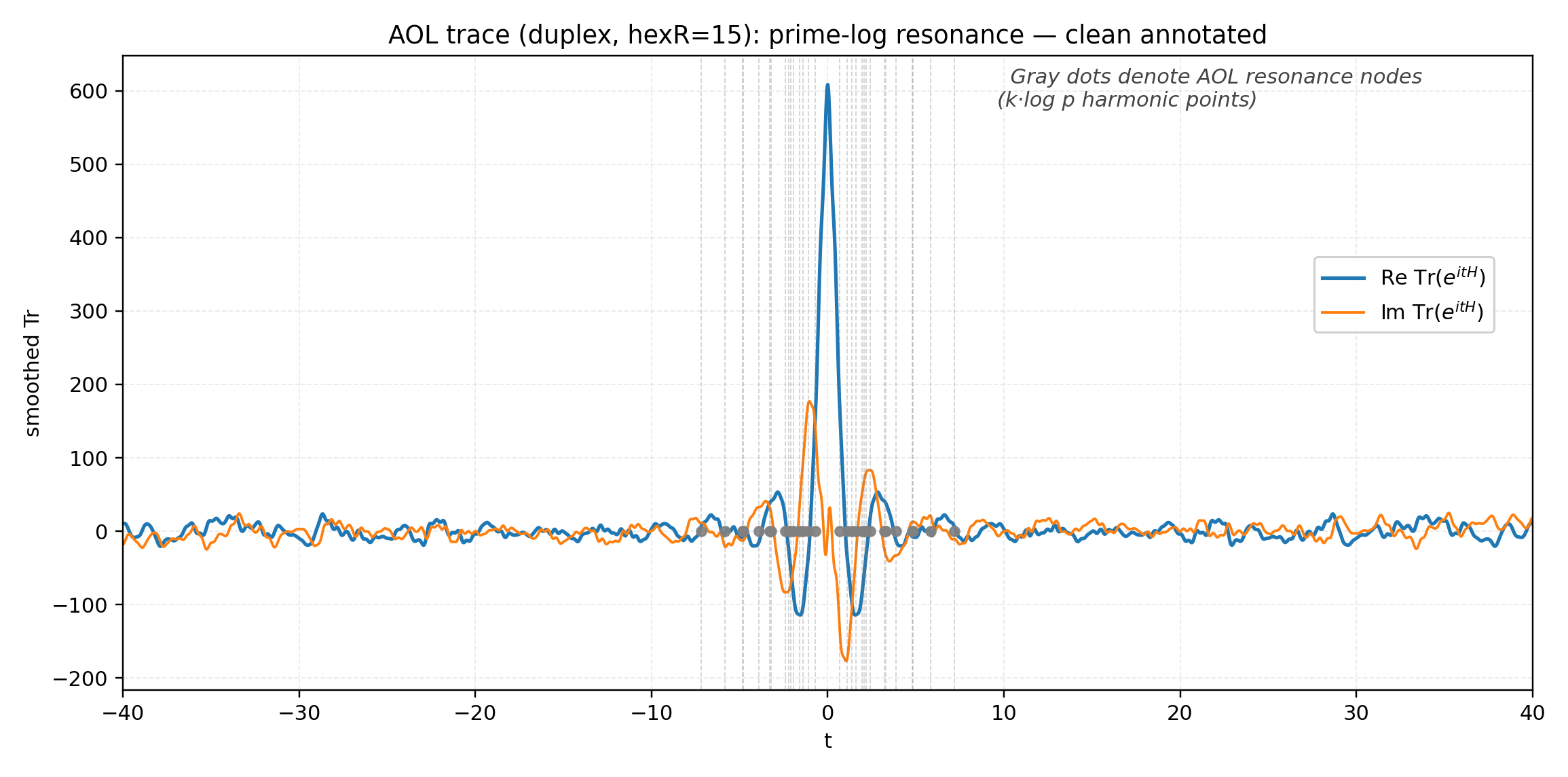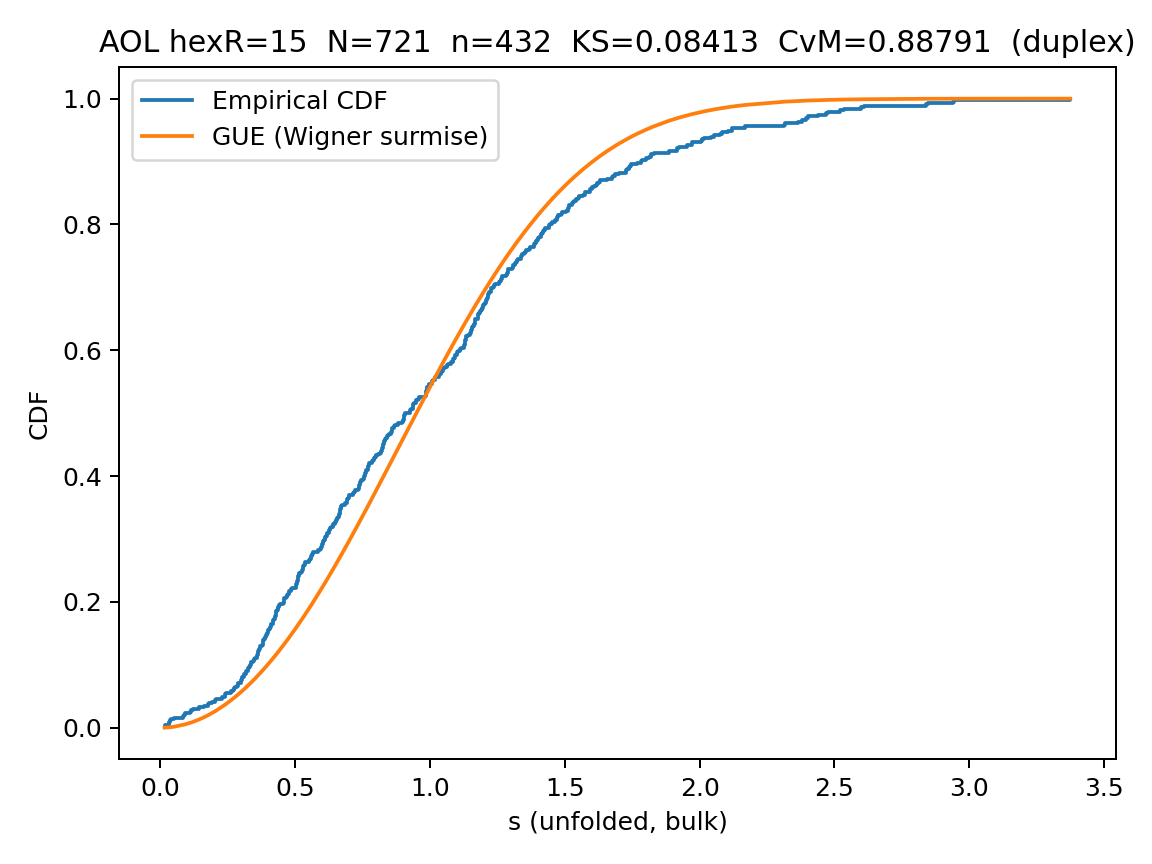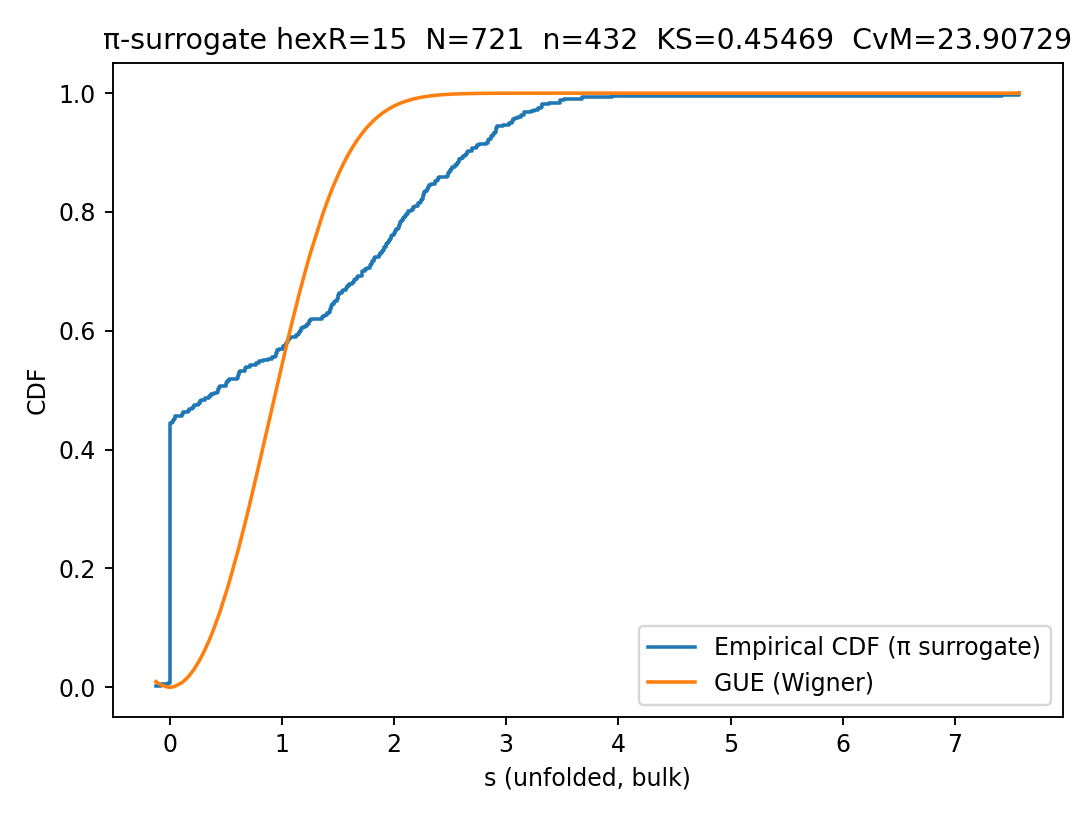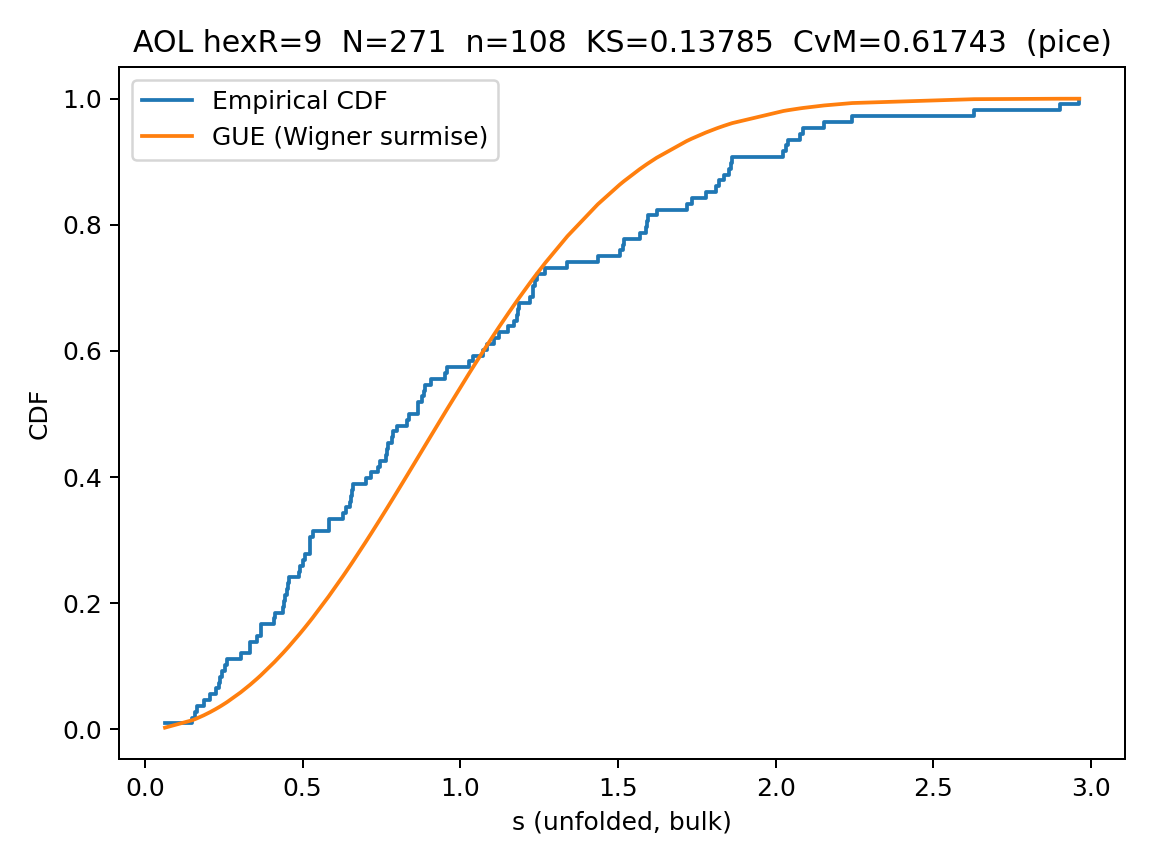Key figures (click to enlarge)




Numerical results (summary)
| Run | Anchoring | hexR | Bulk | KS | CvM | Interpretation |
|---|---|---|---|---|---|---|
| R15 — Duplex (Λ) | Λ(v)=V₀·Λ(f(v)) | 15 | 0.20–0.80 | 0.084 | 0.888 | GUE match; prime-lock coherence |
| R15 — π surrogate | V(v)=π | 15 | 0.20–0.80 | 0.455 | 23.907 | No GUE; coherence lost (falsification control) |
| R9 — PICE | curvature-phase (PICE) | 9 | 0.30–0.70 | 0.138 | 0.617 | Converging equilibrium structure |
Method (concise)
AOL acts on the hex-lattice disk of radius R with spiral index map f. Diagonal terms use von Mangoldt anchors, off-diagonals are nearest-neighbor hops with duplex phases \(\theta_{v,w}=2\pi\alpha(\Phi(f(v))+\Phi(f(w)))\) where \(\Phi=\Lambda\) and \(\alpha=1/\varphi\). Bulk eigenvalue spacings are unfolded (quantiles shown), normalized to mean 1, and tested against GUE (Wigner surmise). The trace \(\mathrm{Tr}(e^{itH})\) is evaluated on \([-40,40]\) and lightly smoothed; vertical guides and gray dots mark \(k\log p\) harmonics.
Raw datasets (JSON & CSV)
- Λ-anchored (Duplex), hexR=15, bulk 0.20–0.80
- π-only surrogate (control), hexR=15, bulk 0.20–0.80
- PICE variant, hexR=9, bulk 0.30–0.70
For the complete reproduction pack (code + commands), see the Final Test page.